Embroiderers
COUNTRIES
DRESS
A 14-year, award winning global, collaborative embroidery project
2009 to 2023
The Red Dress project, conceived by British artist Kirstie Macleod, provides an artistic platform for individuals (majority women) around the world, many of whom are vulnerable and live in poverty, to tell their story through embroidery.
From 2009 to 2023, pieces of the Red Dress travelled the globe being continuously embroidered onto. Constructed out of 87 pieces of burgundy silk dupion, the garment has been worked on by 367 women/girls, 11 men/boys and 2 non-binary artists from 51 countries. All 141 commissioned embroiderers were paid for their work, and receive a portion of all ongoing exhibition fees, merchandise, and the opportunity to sell their work through the Red Dress Etsy shop. The rest of the embroidery was added by willing audience at various exhibitions & events.
Embroiderers include female refugees from Palestine, Syria and Ukraine, women seeking asylum in the UK from Iran, Iraq, China, Nigeria and Namibia, survivors of war in Kosovo, Bosnia & Herzegovina, Rwanda, and DR Congo; impoverished women in South Africa, Mexico, and Egypt; individuals in Kenya, Japan, Turkey, Jamaica, Sweden, Peru, Czech Republic, Dubai, Afghanistan, Australia, Argentina, Germany, Switzerland, Canada, Tobago, Vietnam, Estonia, USA, Russia, Pakistan, Wales, Colombia and England, students from Montenegro, Brazil, Malta, Singapore, Eritrea, Norway, Poland, Finland, Ireland, Romania and Hong Kong as well as upmarket embroidery studios in India and Saudi Arabia.
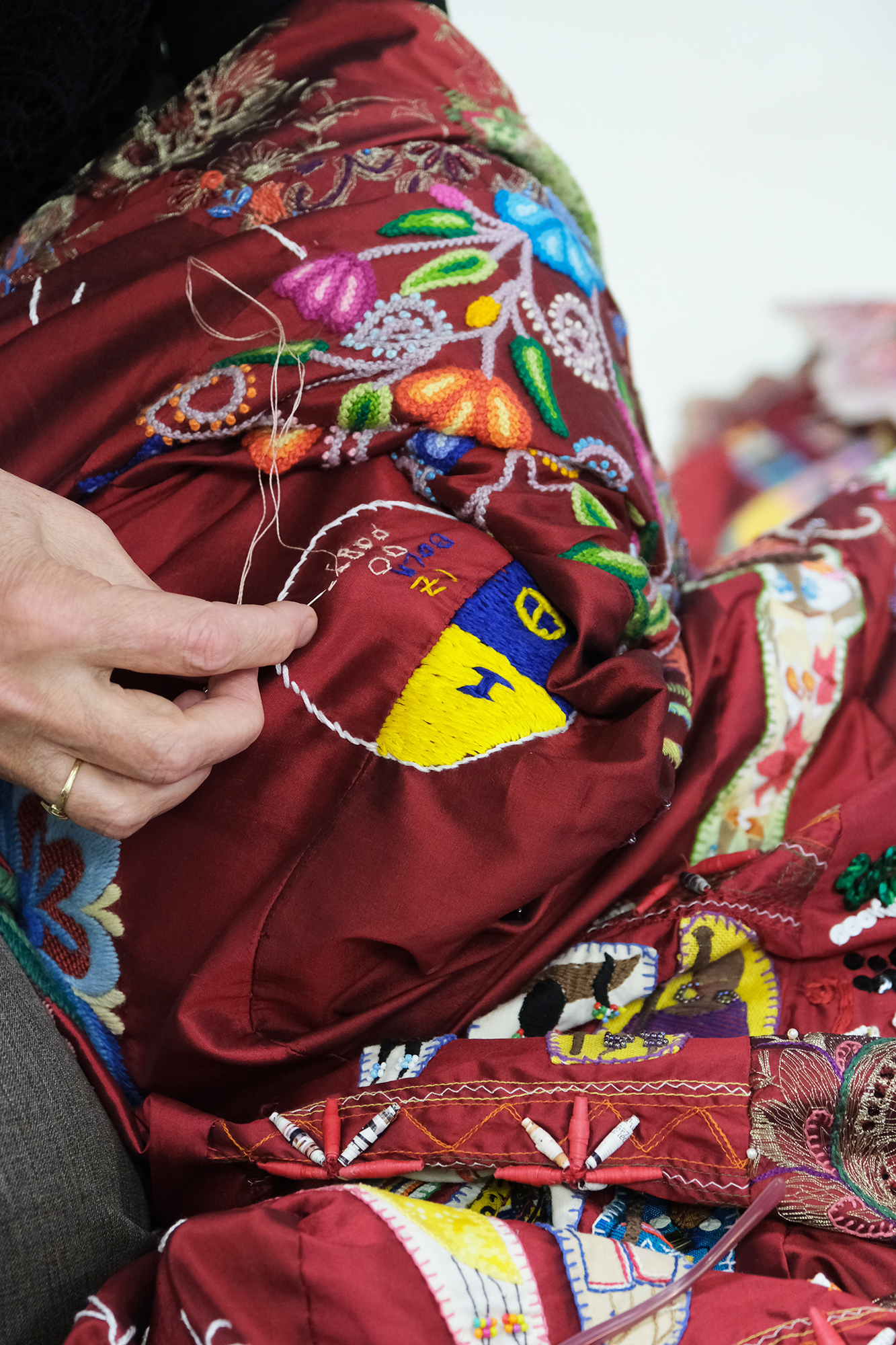
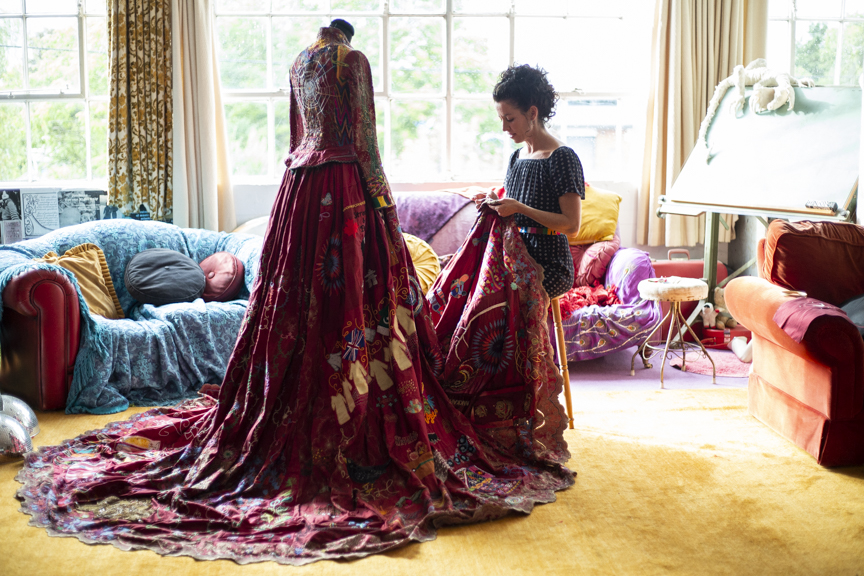
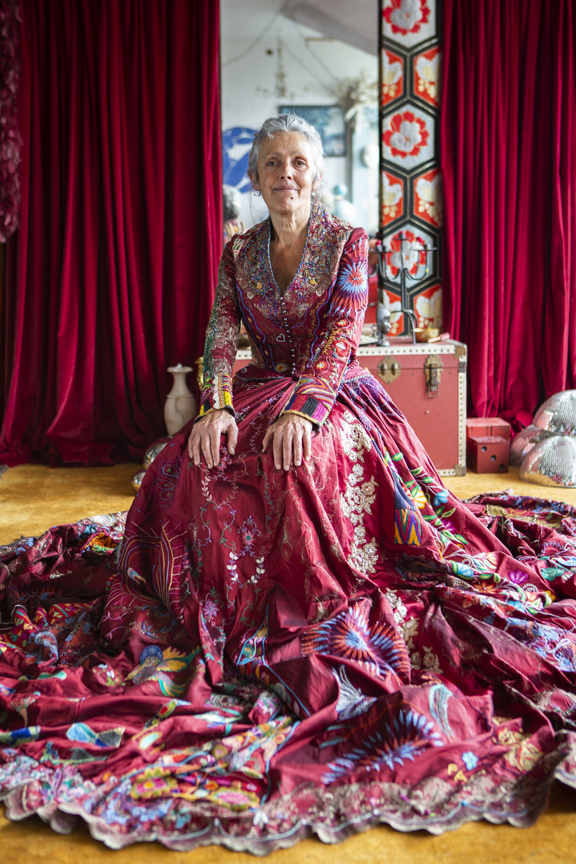
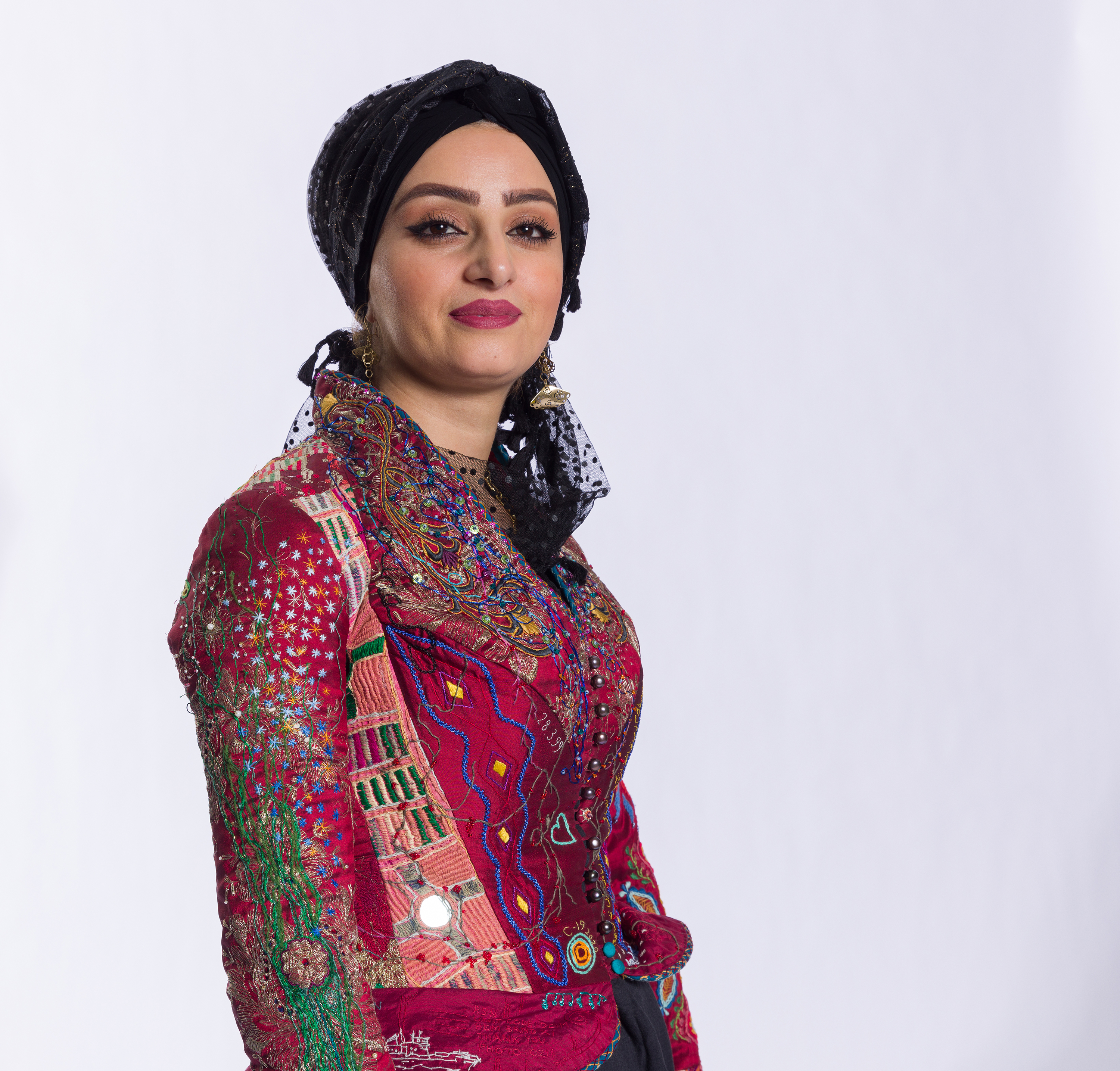
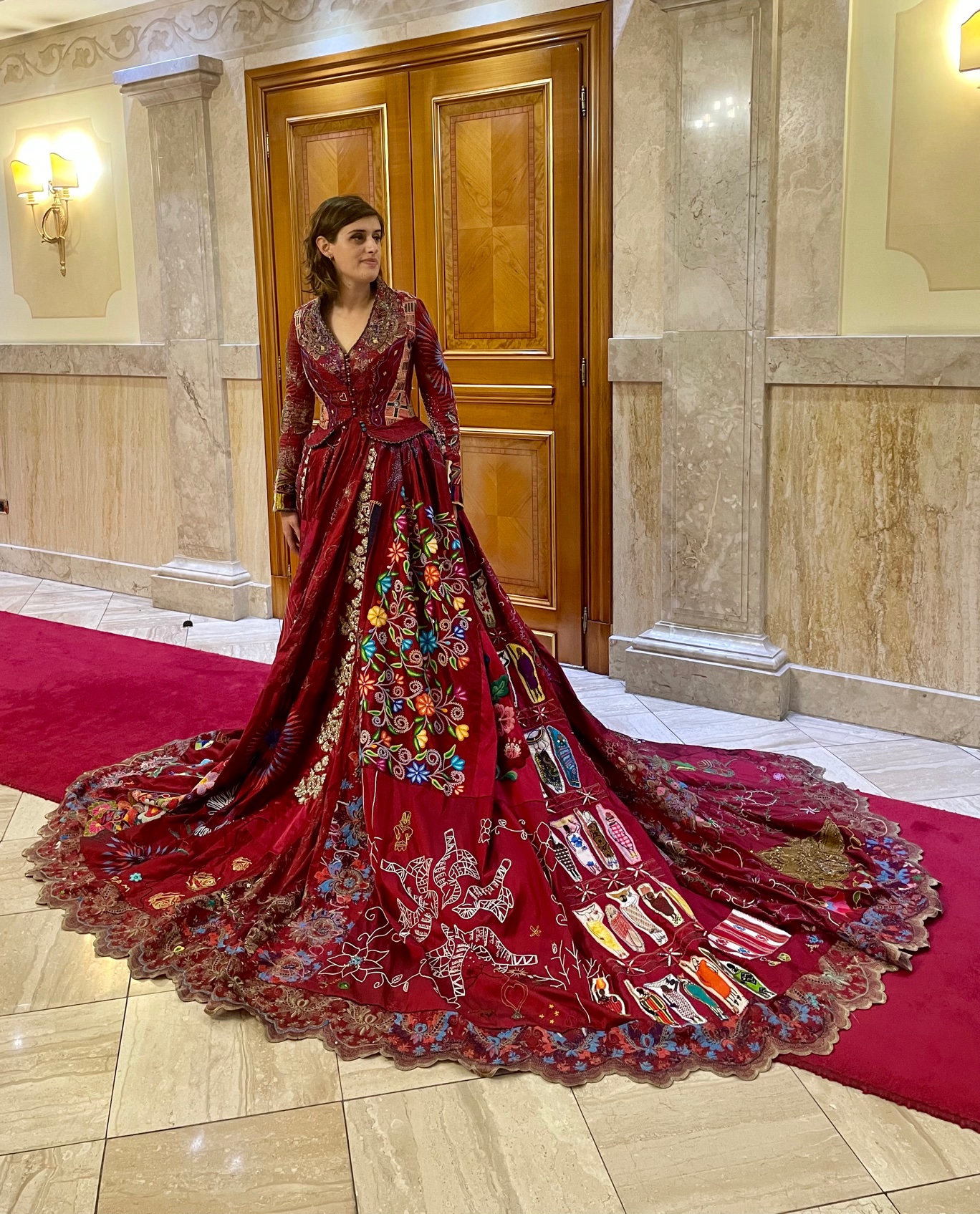

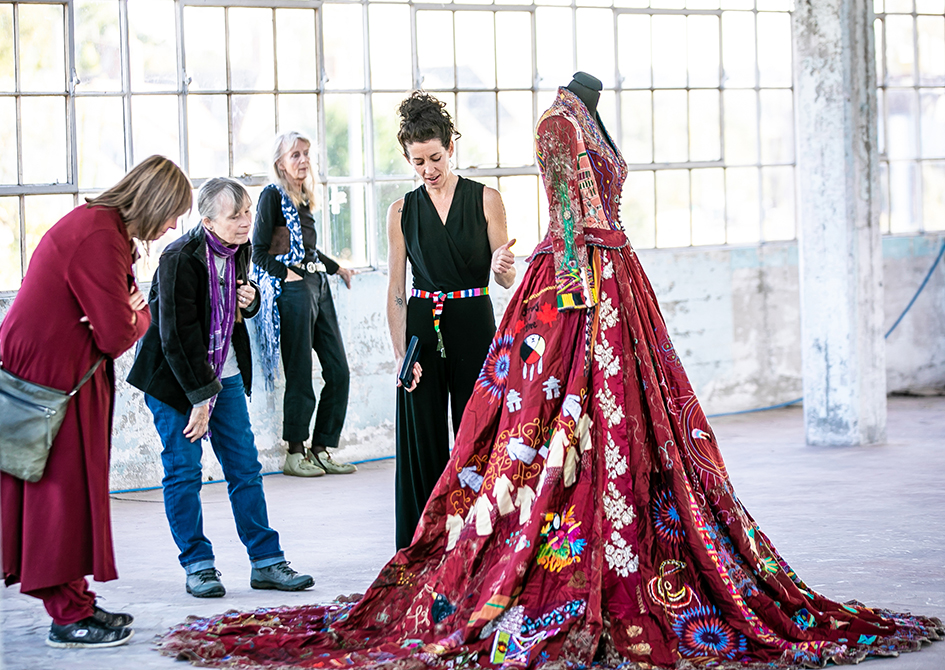
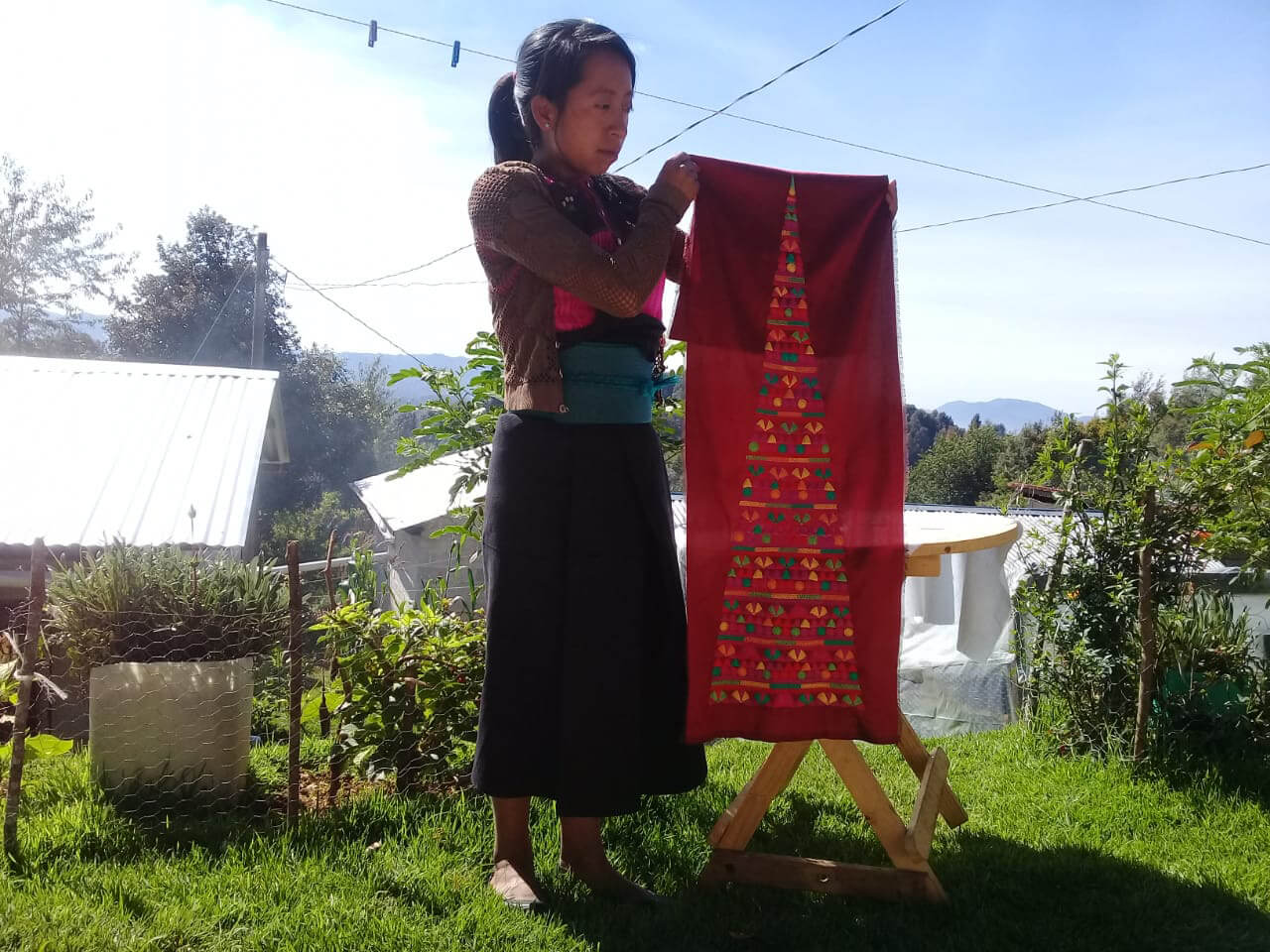
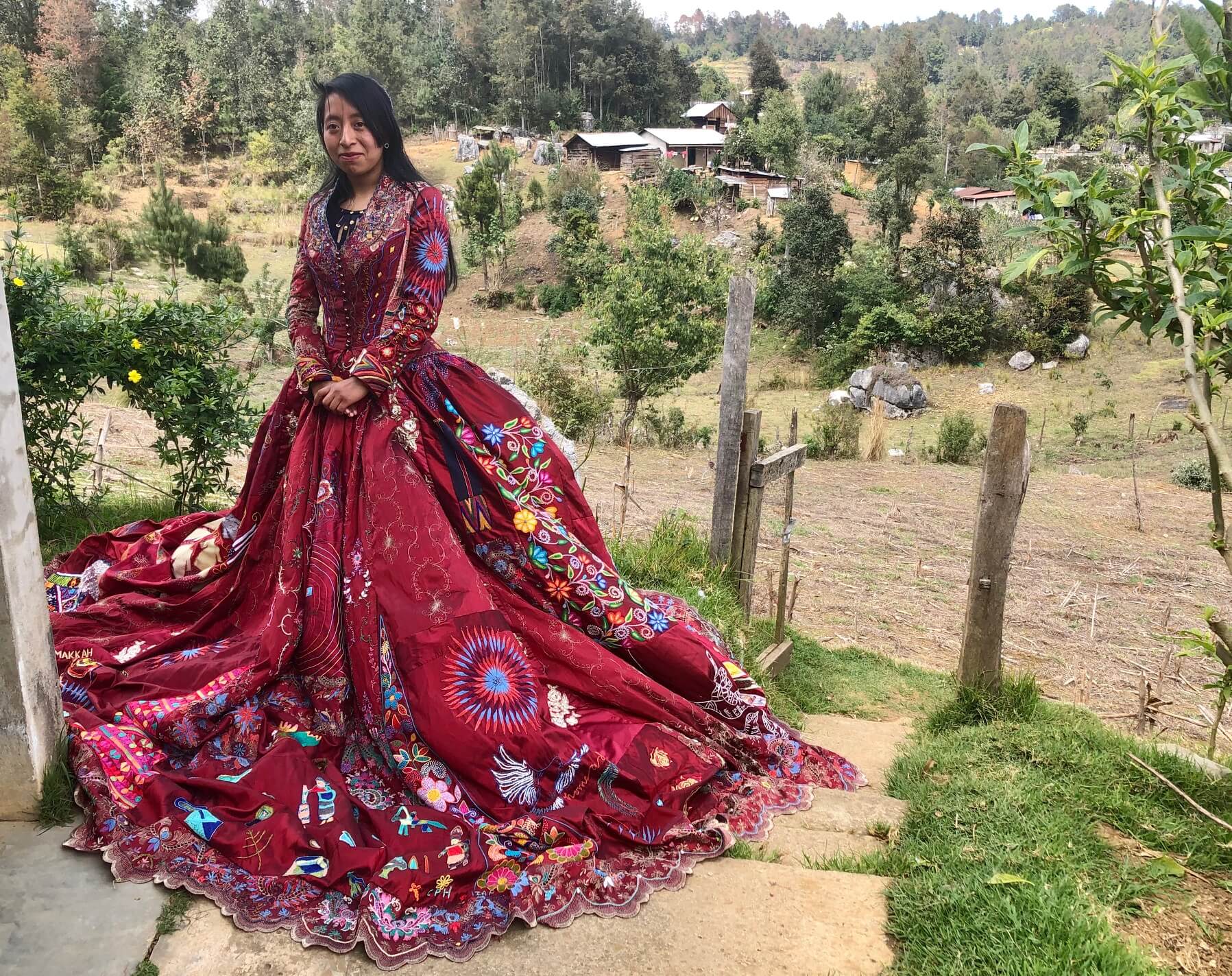
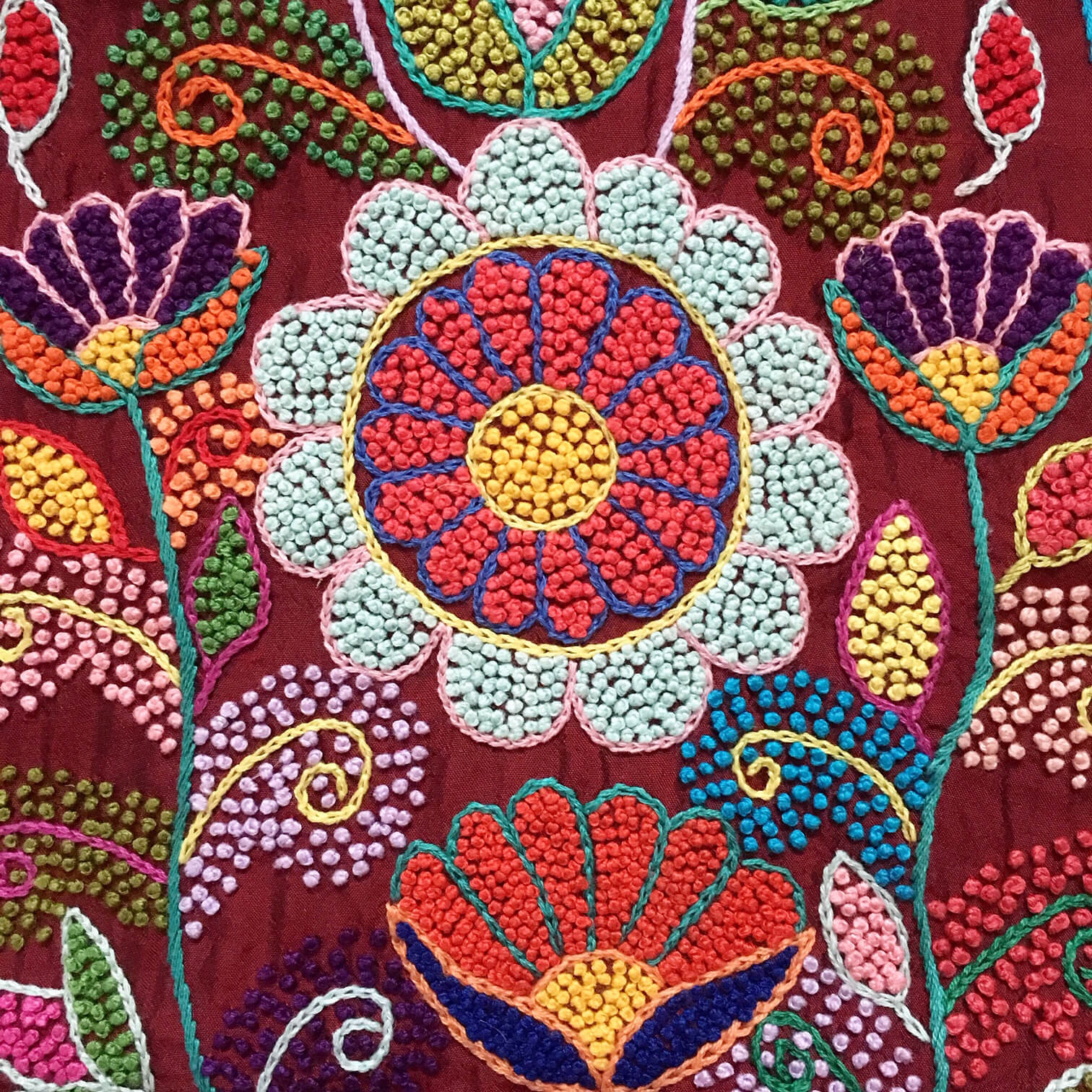
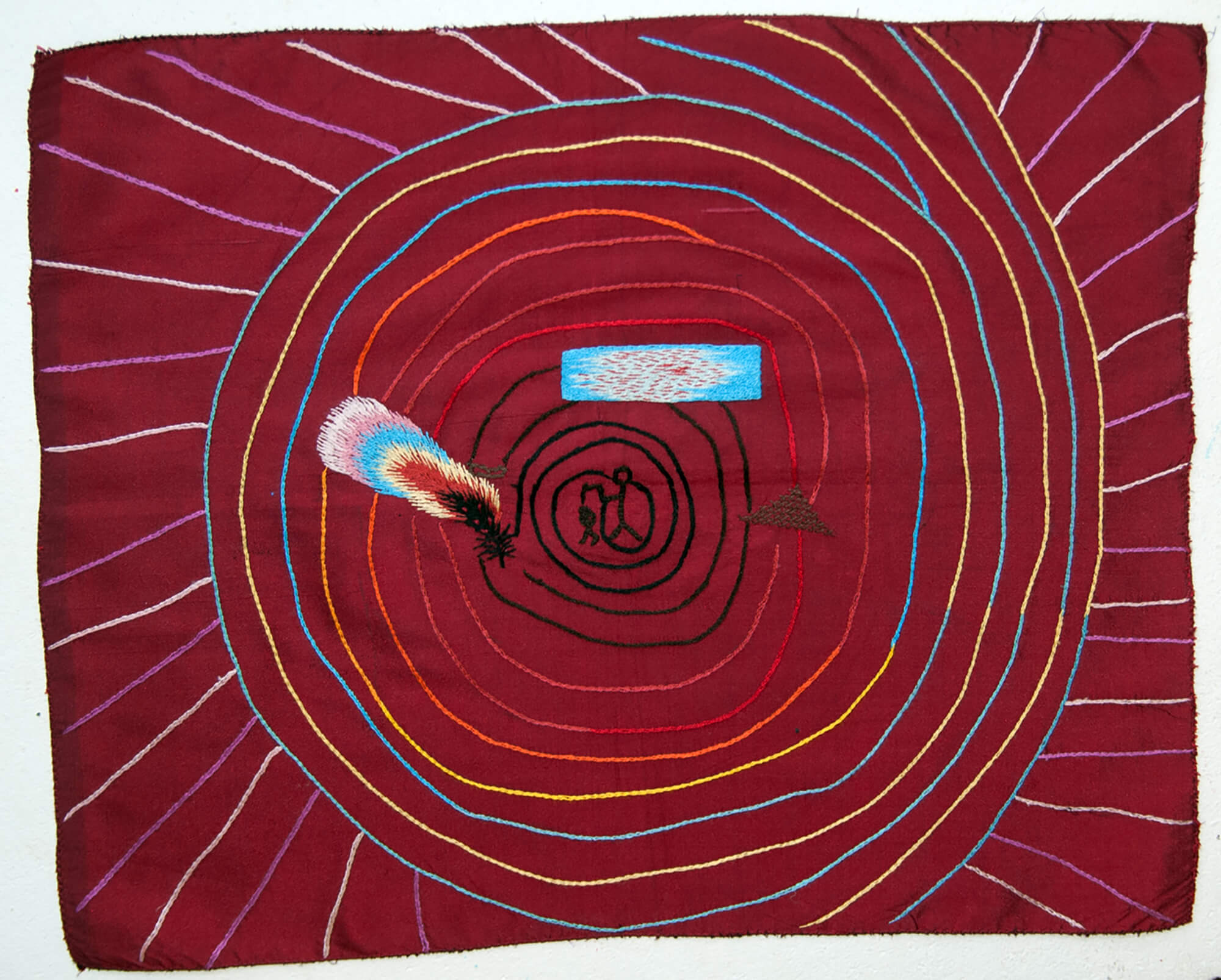

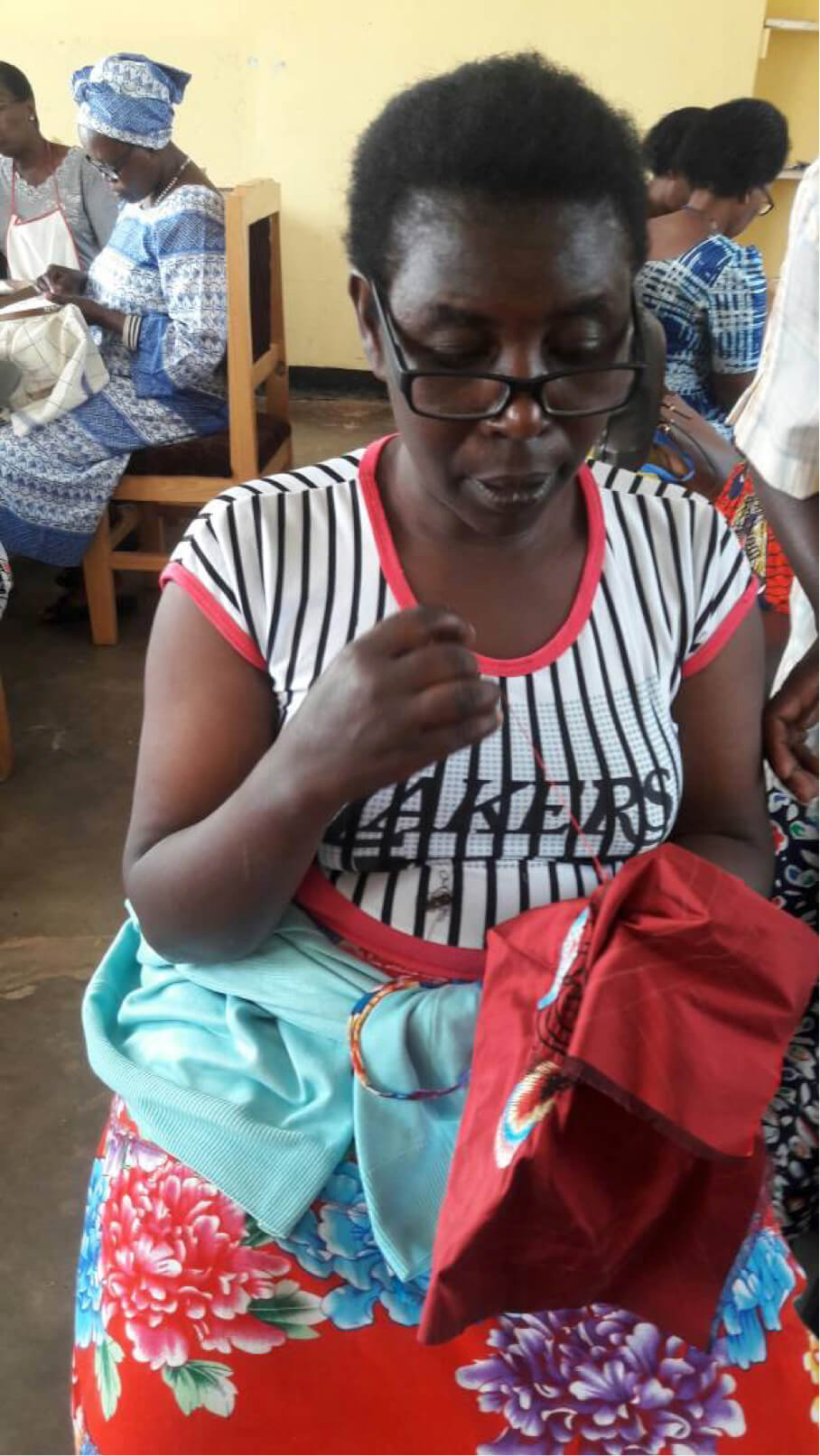
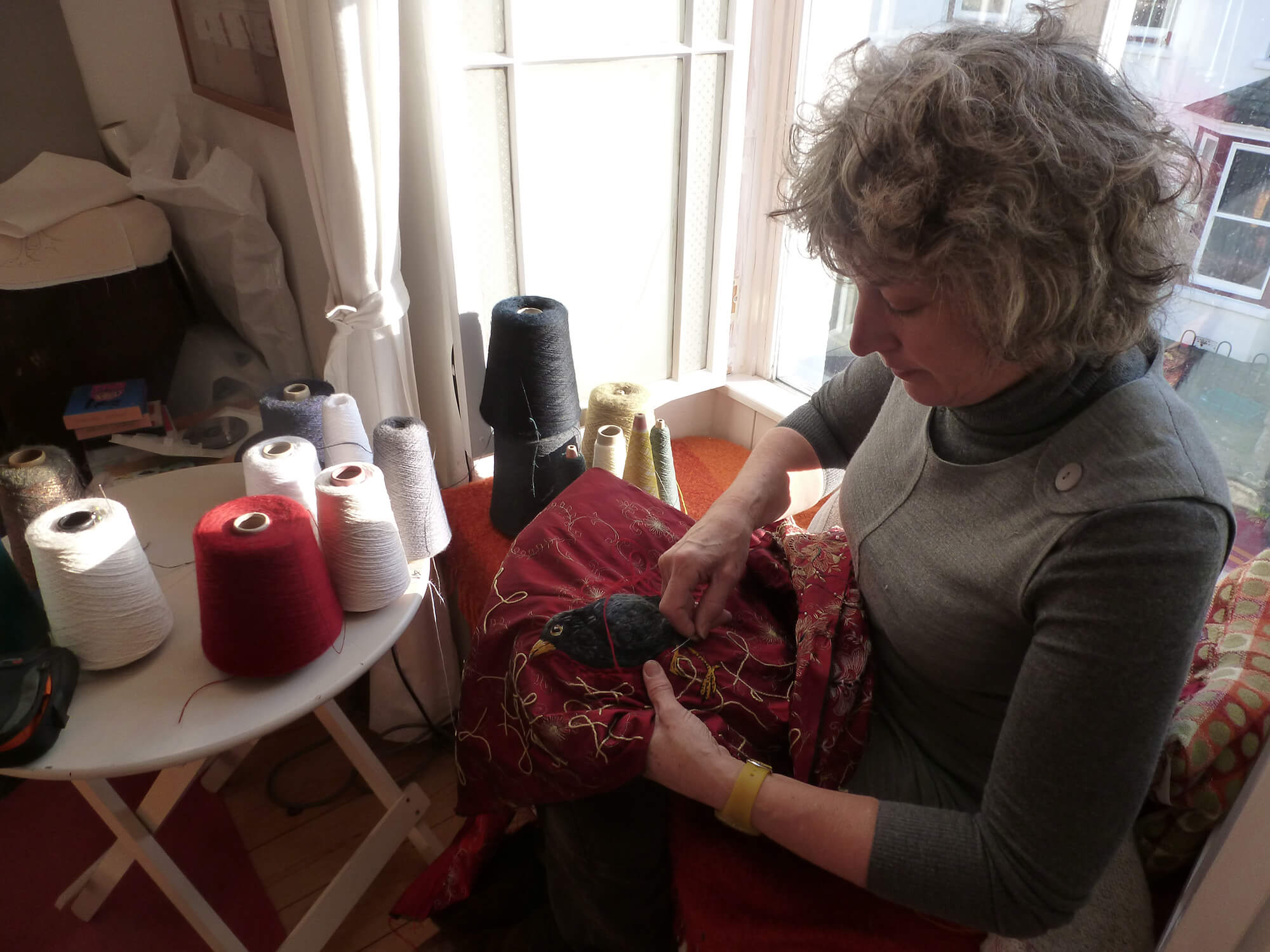
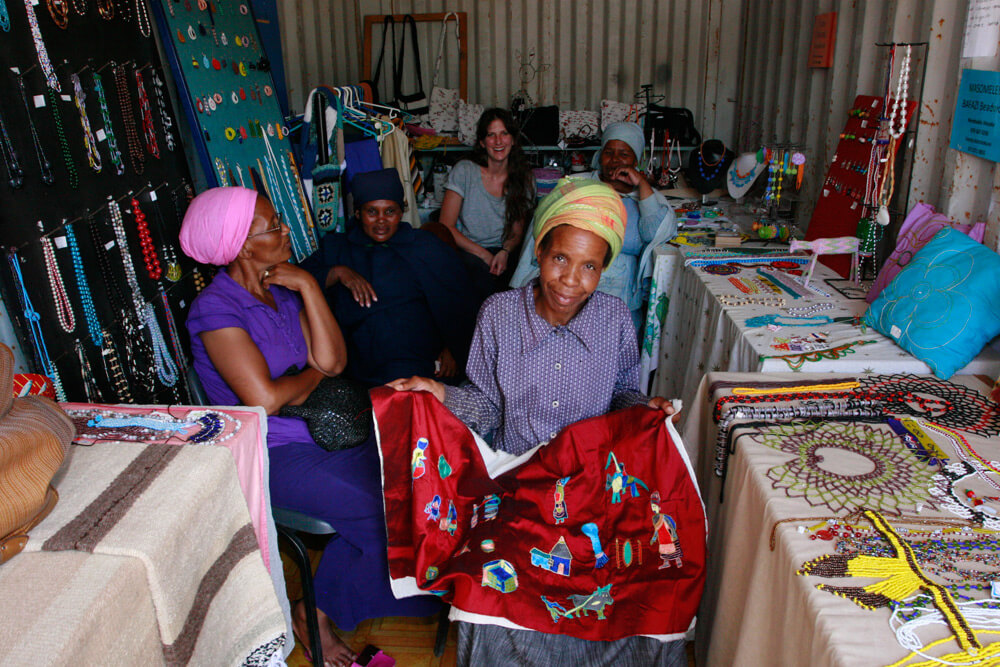

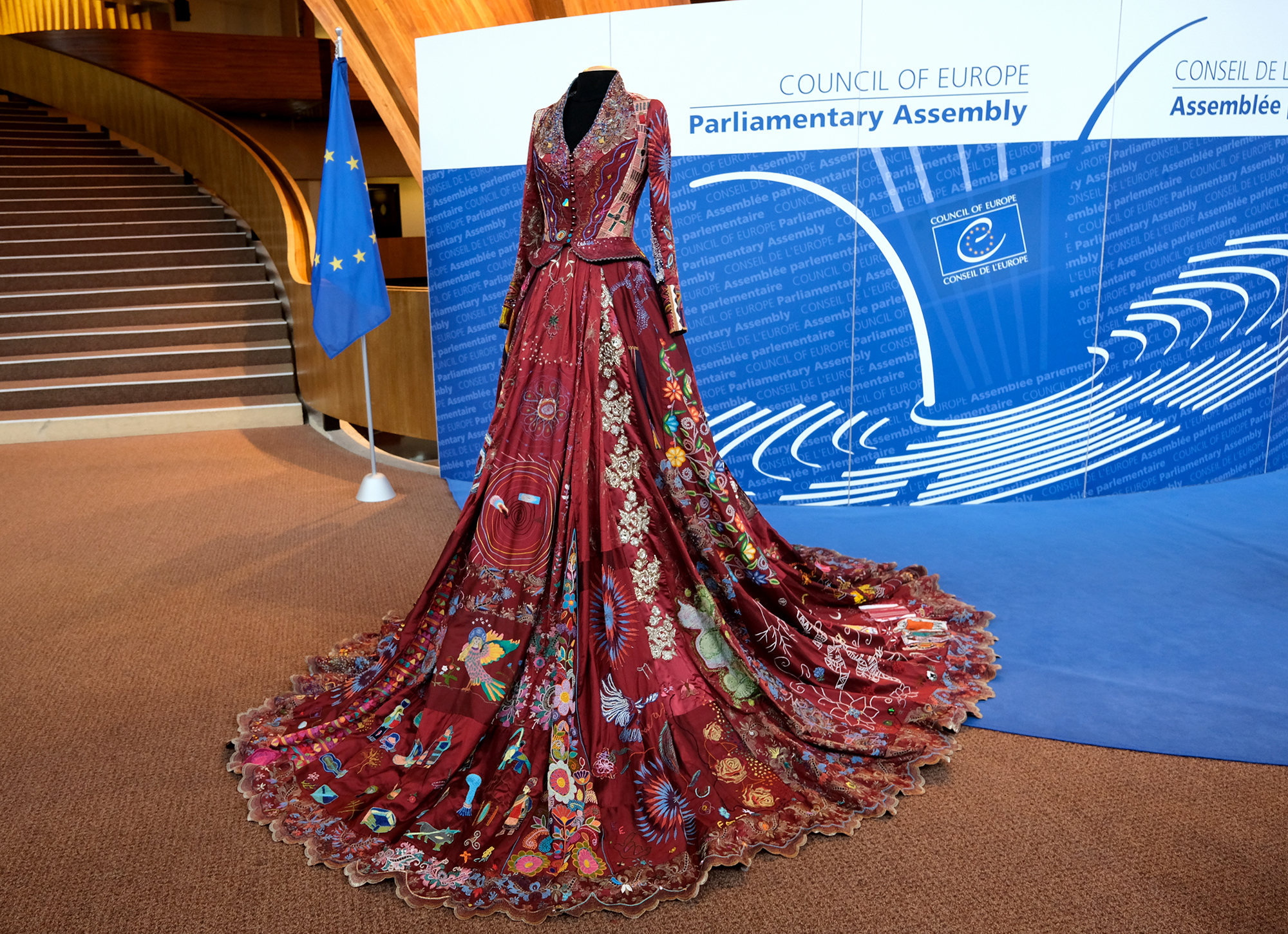
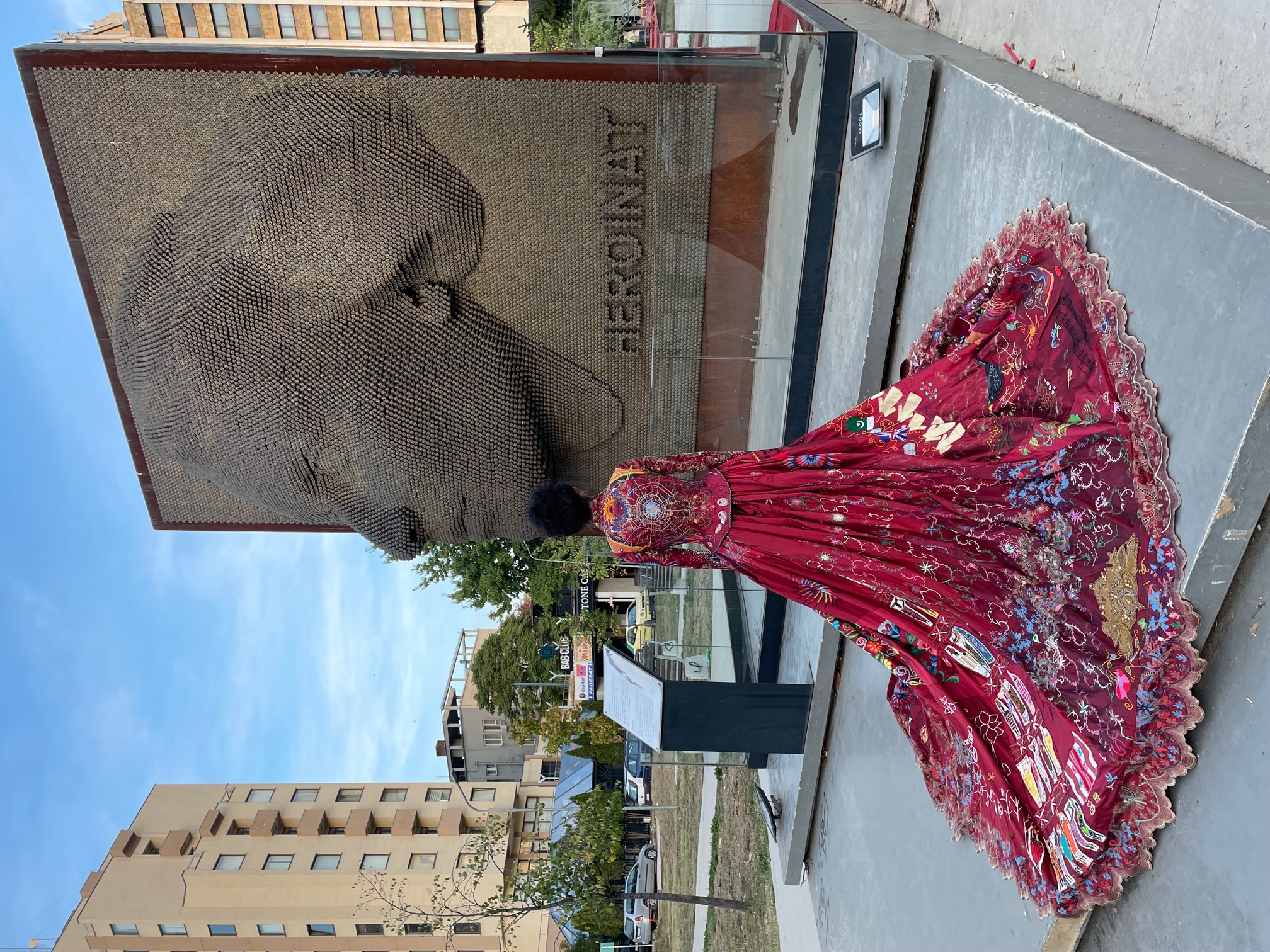


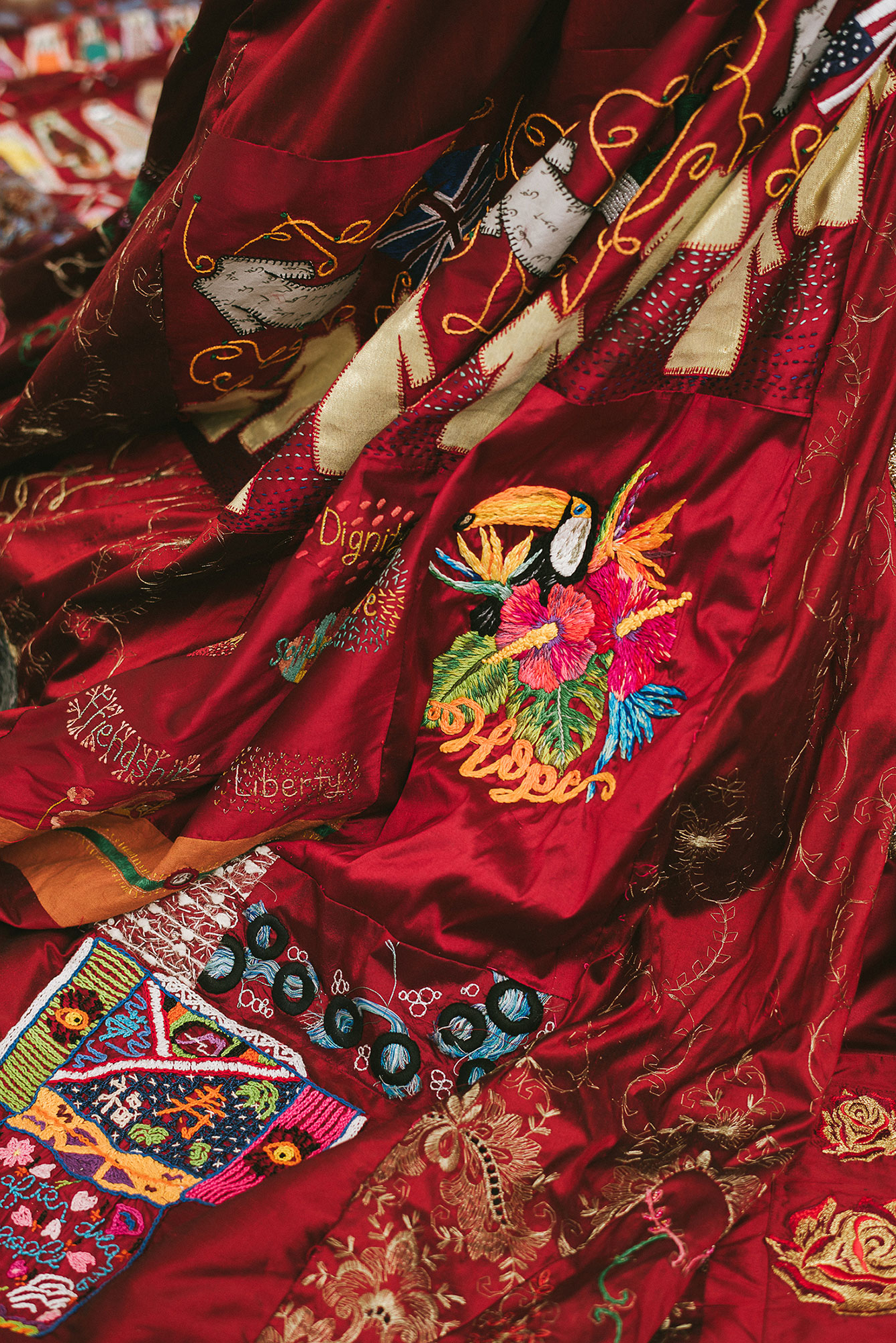
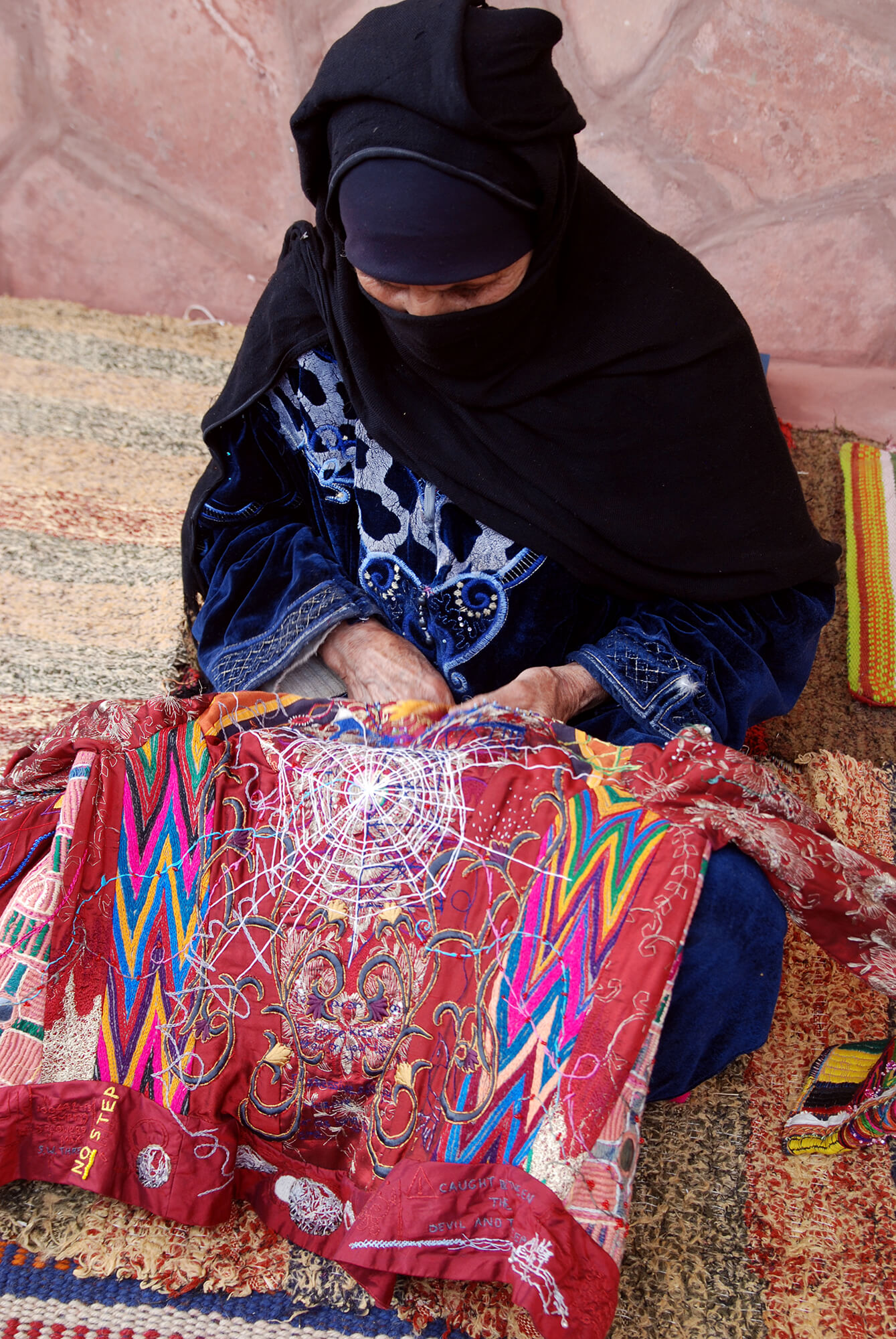
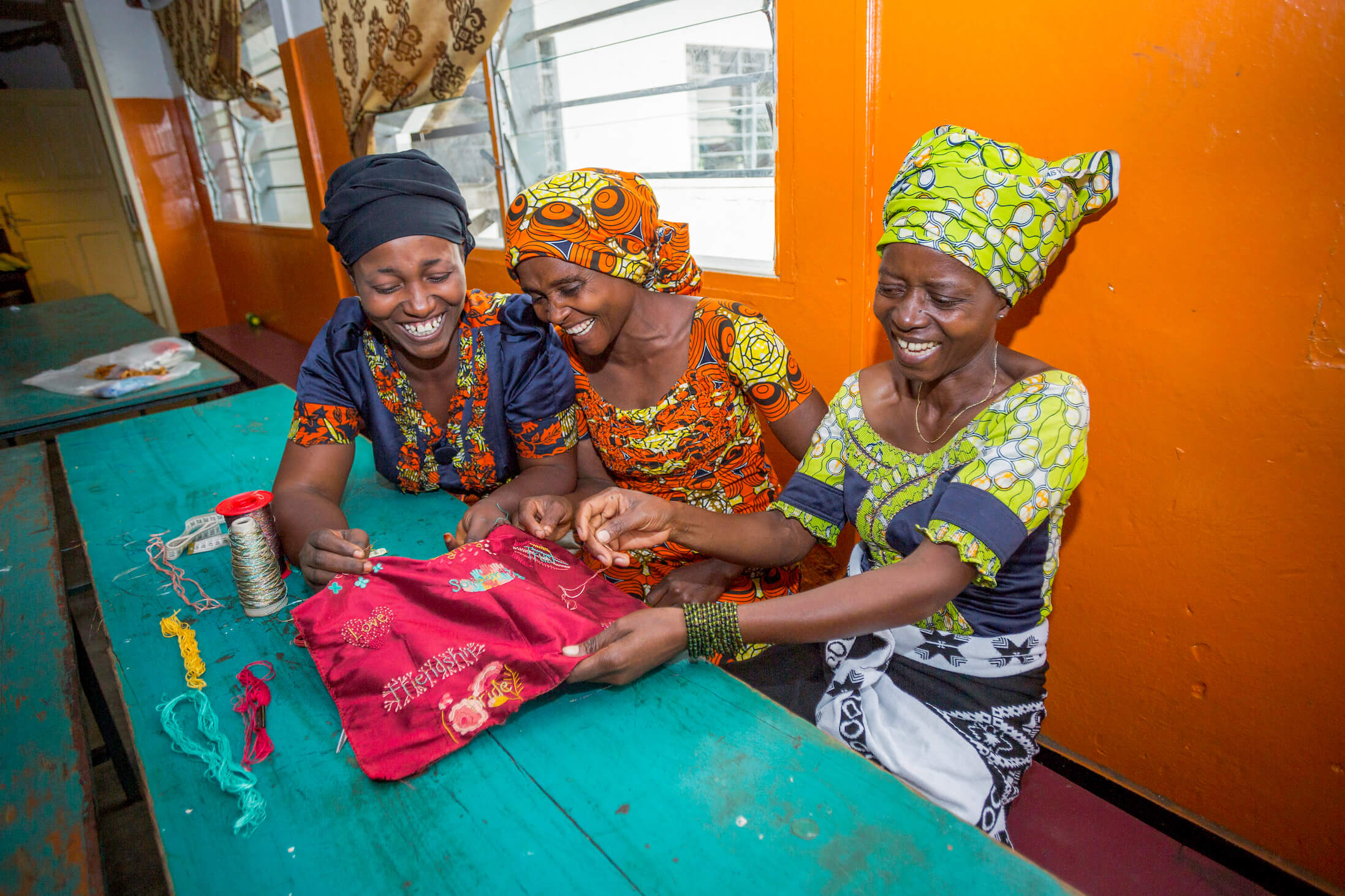
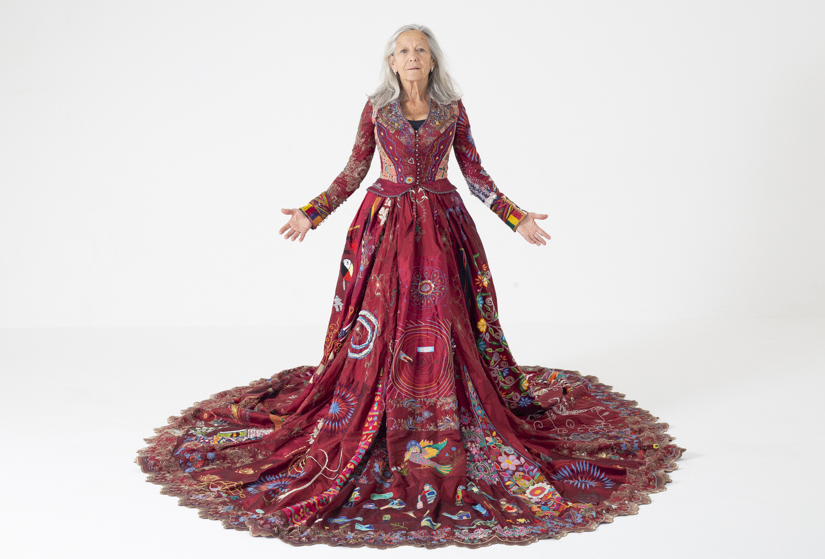

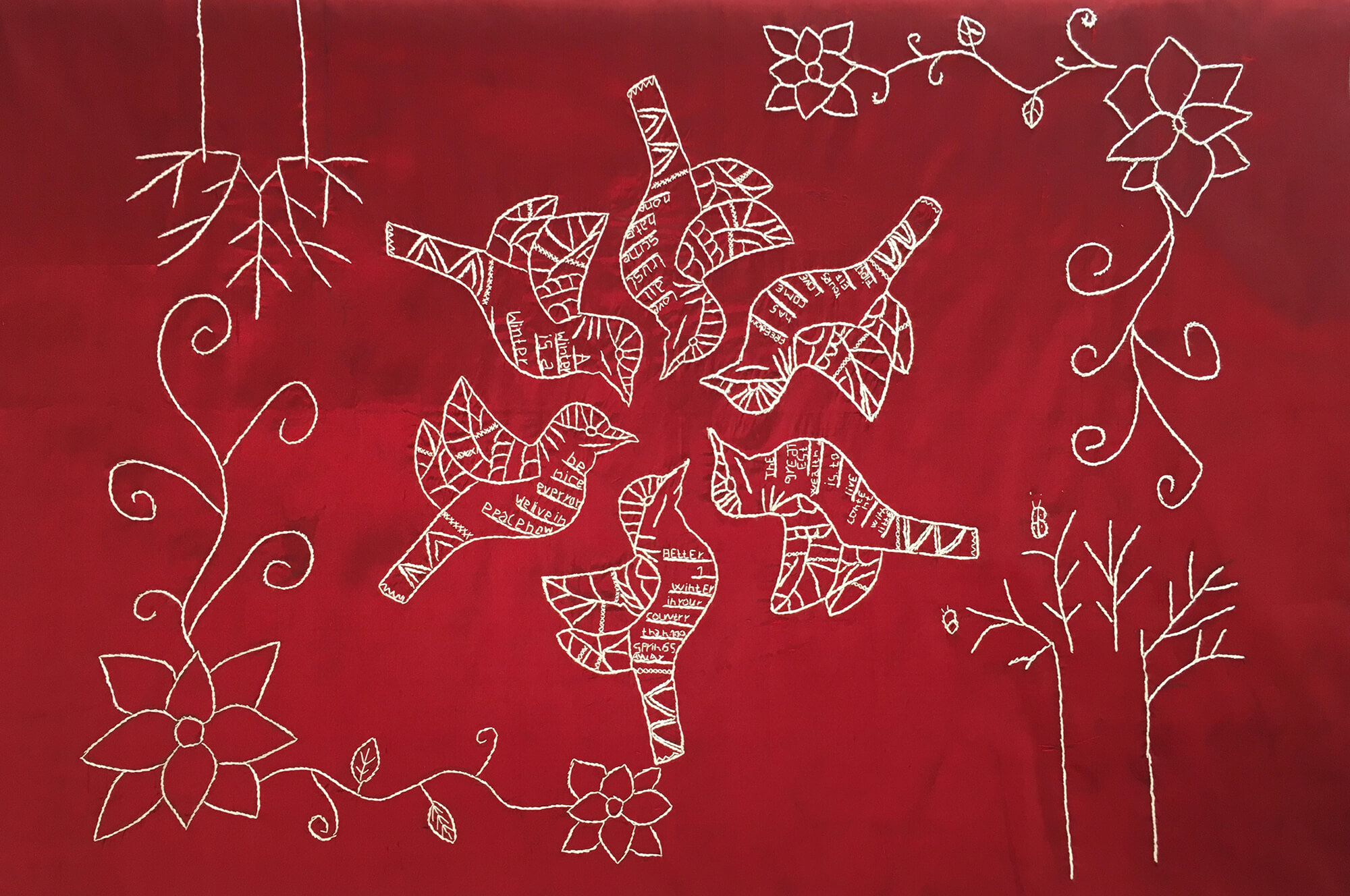
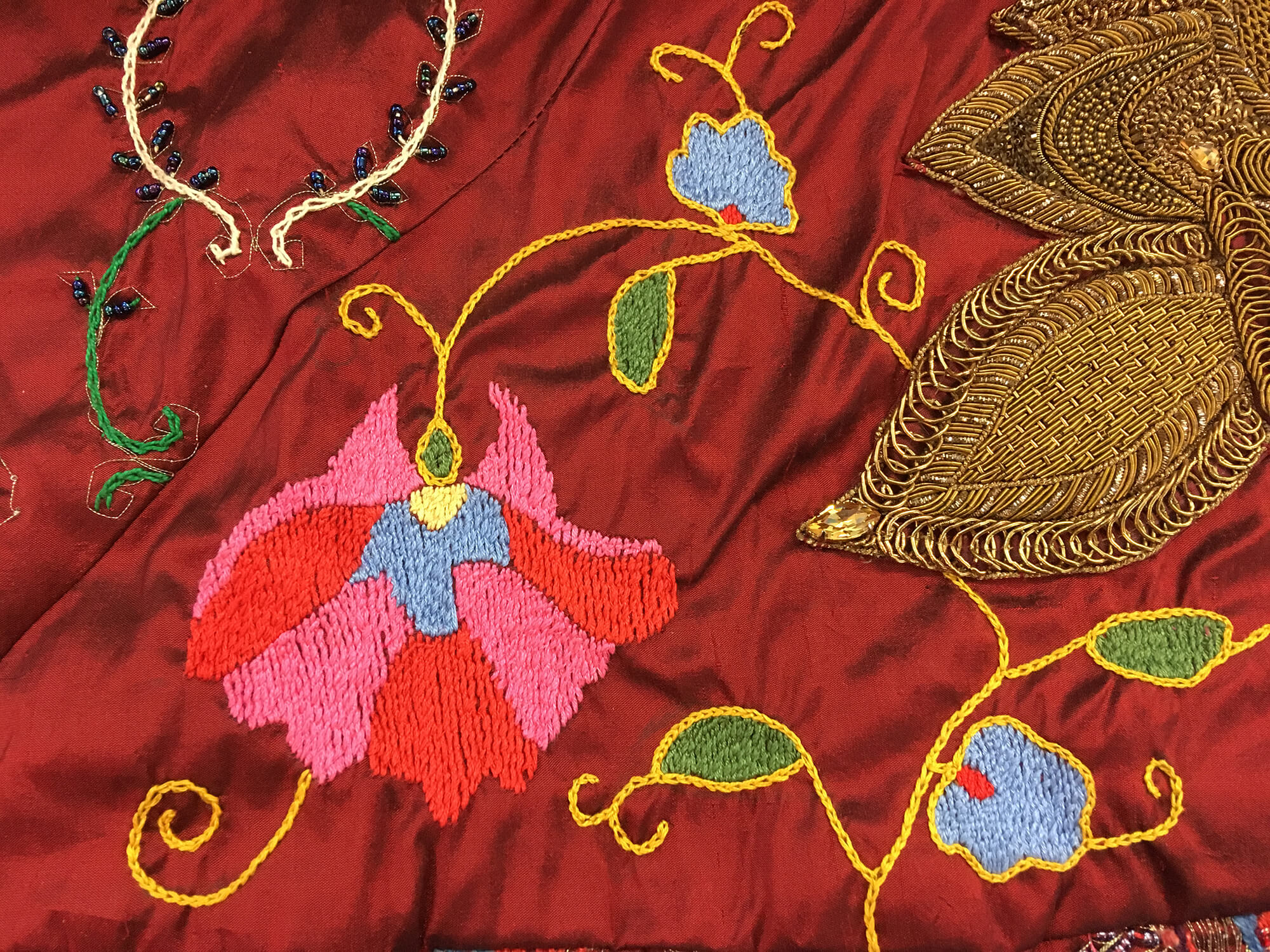
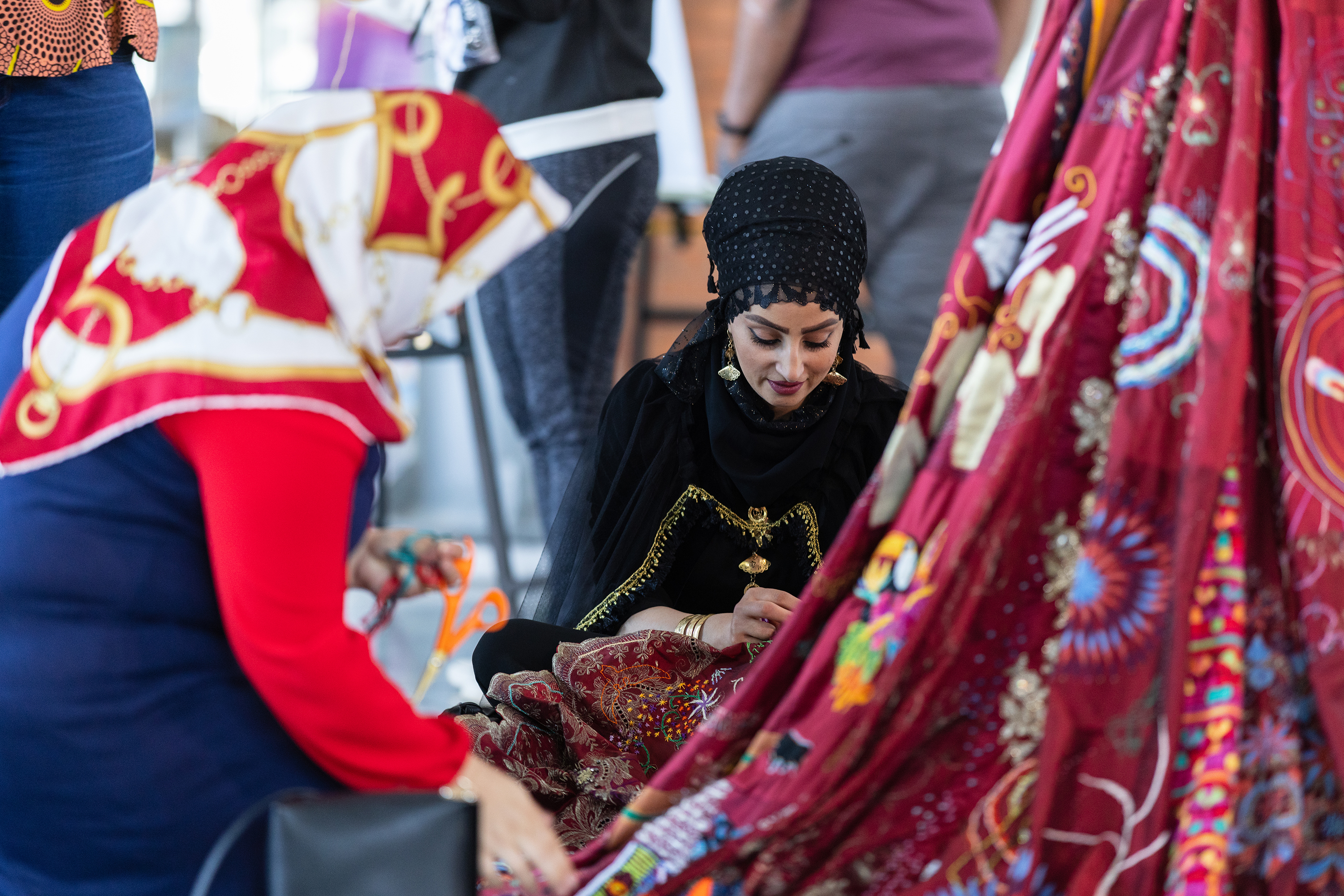
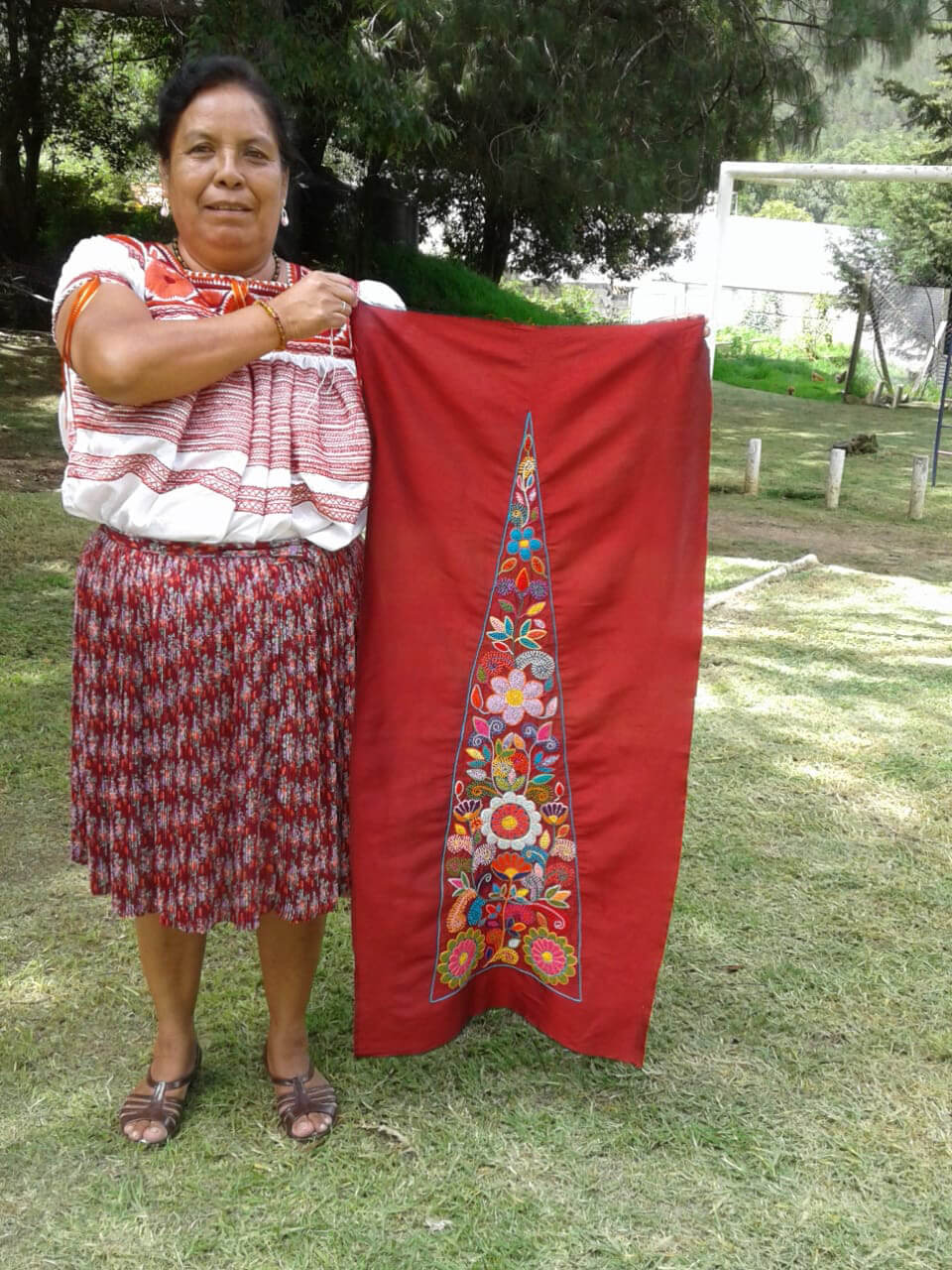
Initially the project sought to generate a dialogue of identity through embroidery, uniting people around the world without borders. However, over the 14 years the dress has also become a platform for self-expression and an opportunity for voices to be amplified and heard.
Many of the embroiderers are established professionals, but there are also pieces created by first time embroiderers. The artists were encouraged to create a work that expressed their own identities whilst adding their own cultural and traditional experience. Some used specific styles of embroidery practiced for hundreds of years within their family, village, or town whilst others chose simple stitches to convey powerful events from their past. Some of the women are re-building their lives with the help of embroidery, by using their skill or being trained in embroidery to earn a decent and consistent living.
The Red Dress has been exhibited in various galleries and museums worldwide, including Gallery Maeght in Paris, Art Dubai, Museo Des Arte Popular in Mexico City, the National Library of Kosovo, Southern Vermont Arts Centre, Frick Musuem Pittsburgh, Fuller Craft Museum, USA, National Waterfront Museum in Wales, Fashion and Textile Museum, London, an event at the Royal Academy in London, and the Premio Valcellina Textiles Award in Maniago, Italy where it won first prize in 2015.
The Red Dress’s 14-year creation journey around the world is now complete with the garment assembled in its final configuration. Covered in millions of stitches, the 6.8 kg. silk Red Dress is weighted as much by the individual stories and collective voices waiting to be heard as by the threads and beads that adorn it.
Moving forward, as well as continuing to develop a strong online platform the Red Dress will be travelling to many different galleries, museums, and event spaces around the world, with a continued aim to be accessible to all. Kirstie hopes to bring the garment to visit the countries of all commissioned embroiderers, and exhibit the Red Dress alongside their own work in their chosen venue.
Practical and logistical support with commissions for the project was provided by the following charities, self-help development projects, social enterprises and various initiatives providing support to women in poverty: Manchester Aid for Kosovo supporting Sister Stitch in Kosovo; Kisany in Rwanda and DR Congo; Missibaba in South Africa; Kitzen in Mexico; Al Badia in Lebanon supporting Palestinan refugees; FanSina in Egypt; the Swansea Women’s Asylum & Refugee Support Group, Wales, White Ribbon Alliance, UK, and the War Childhood Musuem in Bosnia & Herzegovina.
Seed investment for the project was provided by the British Council Dubai in 2009, with subsequent funding received from the Arts Council Lottery Fund, 3 British Embassy’s, Contemporary Middle East, Southern Vermont Arts Centre, Frick Pittsburgh, Fuller Craft Museum, 441 individuals from 2 Crowdfunding campaigns and private donations.
.
OUR SUPPORTERS
A huge thank you to all who have given their time, energy, enthusiasm, advice, experience and financial support to the Red Dress project over the years.
In addition to the institutions below, funding has been gratefully received from a number of private donations and 441 individuals around the world via 2 Crowdfunding campaigns in 2020 and 2022.
In addition to the institutions below, funding has been gratefully received from a number of private donations and 441 individuals around the world via 2 Crowdfunding campaigns in 2020 and 2022.


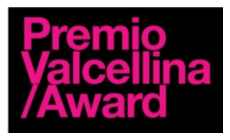
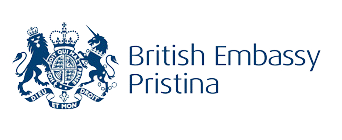




"
"
